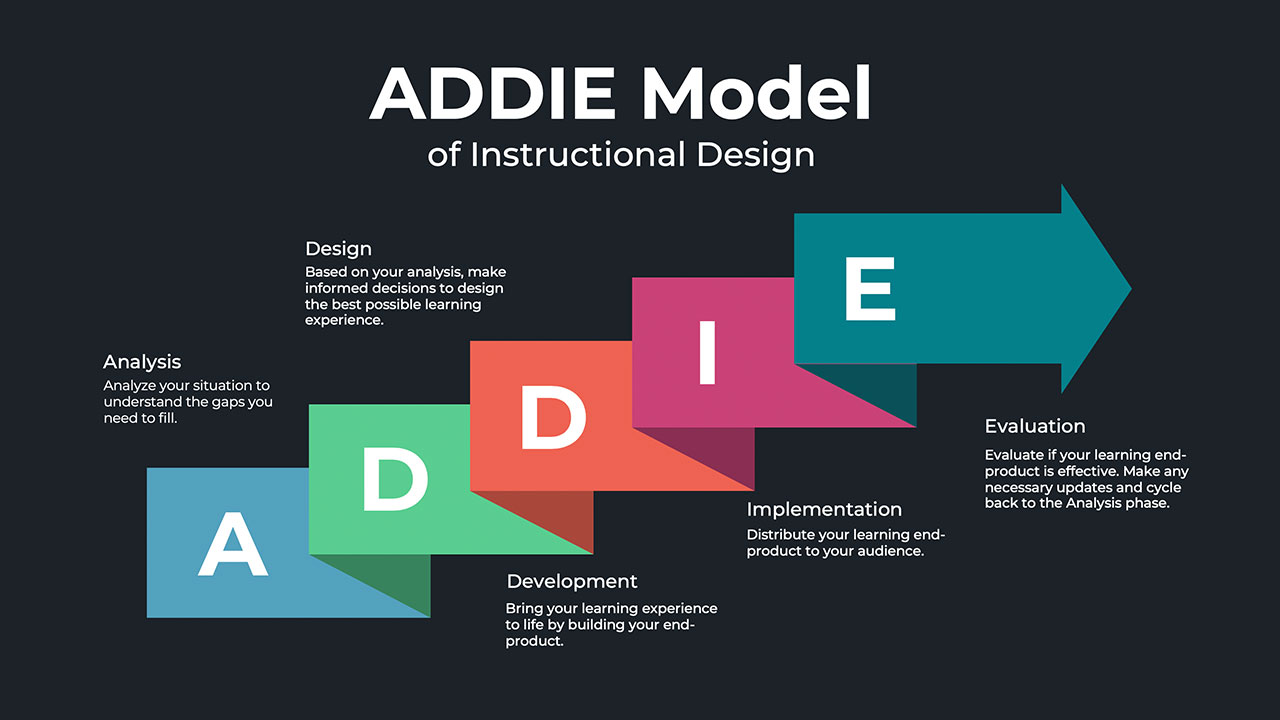In the dynamic landscape of education and training, methodologies and models must evolve to keep pace with the ever-changing needs of learners and organizations. The ADDIE (Analysis, Design, Development, Implementation, Evaluation) model, a stalwart in instructional design, has seen a decline in popularity in recent times. While it once stood as a beacon for systematic instructional design, several factors have contributed to its waning influence in the contemporary learning environment.
- Agile and Iterative Approaches
One of the primary reasons behind the fading prominence of the ADDIE model is the rise of agile and iterative approaches in instructional design. Traditional ADDIE, with its linear structure, is perceived as rigid and time-consuming. In contrast, agile methodologies, such as SAM (Successive Approximation Model) and rapid prototyping, offer more flexibility and adaptability. Modern organizations demand quicker turnarounds, and agile methods allow for frequent revisions and adjustments, fostering a more responsive learning development process.
- Technology-Driven Learning
The advent of technology has revolutionized the way we learn. E-learning platforms, virtual reality, and interactive simulations have become integral components of modern education. The ADDIE model, developed in an era before the digital age, struggles to seamlessly incorporate these technological advancements. Newer models and methodologies are emerging, emphasizing a more tech-friendly, multimedia-rich, and immersive learning experience, leaving ADDIE trailing behind in terms of technological integration.
- Learner-Centered Approaches
The ADDIE model traditionally places instructional designers at the center of the process, with a focus on content creation and delivery. However, contemporary education emphasizes learner-centered approaches, acknowledging the importance of individual needs, preferences, and engagement. Models like Design Thinking and Human-Centered Design are gaining traction, encouraging instructional designers to empathize with learners, involve them in the design process, and create more personalized and effective learning experiences.
- Globalization and Cultural Sensitivity
As the world becomes more interconnected, instructional designers face the challenge of creating content that transcends cultural and linguistic boundaries. The ADDIE model, which originated in a specific cultural and educational context, may not adequately address the nuances of diverse global audiences. Globalized instructional design models, like the Intercultural Development Research Association (IDRA) model, place a stronger emphasis on cultural sensitivity, making them more relevant and inclusive in today’s multicultural learning environments.
- Shorter Development Cycles
In today’s fast-paced business environment, organizations often require learning solutions in shorter timeframes. The ADDIE model’s linear structure, involving sequential phases, can be time-intensive and may not align with the need for rapid development. Agile models and rapid prototyping, with their iterative nature, enable quicker production cycles, allowing organizations to respond swiftly to changing demands and stay competitive in the market.
Conclusion
While the ADDIE model has undoubtedly played a crucial role in shaping instructional design practices, its diminished popularity in contemporary education reflects the evolving needs of learners, technological advancements, and the demand for more agile and learner-centric approaches. As instructional designers navigate the complexities of modern education, they are increasingly turning to models that offer greater flexibility, cultural sensitivity, and responsiveness to the ever-changing landscape of learning and development. While the ADDIE model may not dominate the field as it once did, its legacy lives on, influencing the ongoing conversation about effective instructional design methodologies.











